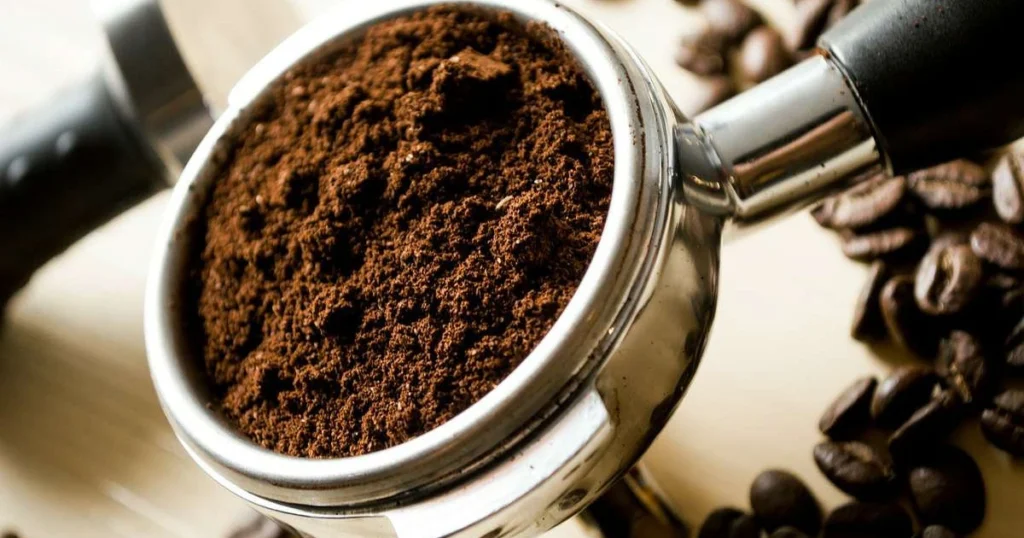Homemade plant food doesn’t have to be complicated. With nothing more than a few kitchen scraps and basic tools, you can create a nutrient-rich fertilizer that rivals store-bought options—without the chemicals, cost, or environmental impact. By combining banana peels and used coffee grounds, you can feed your plants essential nutrients, improve soil health, and reduce household waste.

Why This Fertilizer Works
Banana peels and coffee grounds are two of the most effective natural amendments for home gardeners. Used separately, they already provide valuable nutrients—but together, they create a balanced plant food suitable for both ornamental and edible plants.
Nutritional benefits of banana peels:
- Potassium supports strong stems, boosts overall plant health, and improves resistance to pests and disease.
- Phosphorus fuels flower and fruit production, ensuring better blooms and harvests.
- Calcium helps develop strong root systems and improves soil structure.
- Magnesium and manganese encourage chlorophyll production, aiding photosynthesis and healthy leaf color.
Nutritional benefits of coffee grounds:
- Nitrogen promotes lush, green foliage and steady growth.
- Organic matter improves soil texture, making it better at holding water and nutrients.
- Mild acidity benefits acid-loving plants like roses, tomatoes, hydrangeas, and blueberries.
When combined, these two ingredients deliver a wide range of nutrients for a balanced feeding schedule.
Ingredients You’ll Need
- 3 banana peels, any variety
- 3 tablespoons used coffee grounds (unsweetened)
- 1 liter chlorine-free water
- Blender
- Fine strainer or cheesecloth
- Spray bottle or watering can
Step-by-Step Preparation
1. Prepare the water
If using tap water, let it sit uncovered for 24 hours so the chlorine can evaporate. This helps protect beneficial soil microbes.
2. Blend the mixture
Cut banana peels into small pieces and place them in a blender. Add the coffee grounds and water, then blend for about 3 minutes until smooth.
3. Strain for liquid fertilizer
Pour the blended mixture through a fine strainer or cheesecloth to separate the liquid from the pulp. The liquid will act as a quick-release fertilizer for immediate plant feeding.
4. Apply to plants
Pour the liquid into a spray bottle or watering can. Apply it around the base of your plants, avoiding direct contact with leaves to prevent mold or burning.
How Often to Use
For best results, apply once per week during active growth periods. It works equally well for indoor houseplants and outdoor gardens.
Bonus: Use the leftover pulp
The solids left in the strainer are far too valuable to throw away. Here are two ways to use them:
- Mix into garden soil or potting mix to improve texture and feed soil microbes.
- Bury near plant roots to act as a slow-release nutrient source.
This not only reduces waste but also provides ongoing benefits to your plants.
Benefits of This Homemade Fertilizer
- Environmentally friendly – Diverts kitchen scraps from landfill and avoids chemical runoff.
- Cost-effective – Made entirely from items you already have at home.
- Safe for pets and kids – No harsh chemicals, making it ideal for edible gardens.
- Improves plant health naturally – Encourages robust growth, better blooms, and stronger root systems.
Common Mistakes to Avoid
- Using sweetened coffee grounds – Sugar attracts ants and mold. Always use plain, brewed coffee grounds.
- Applying to dry soil – Lightly water plants before feeding so nutrients absorb more effectively.
- Overuse – Stick to weekly applications; too much organic matter can disrupt soil balance.
Frequently Asked Questions
Can I store this fertilizer for later use?
It’s best to make small batches and use them fresh, as nutrients break down quickly and the mixture can ferment.
Will it attract pests?
If applied correctly to the soil and not left exposed, it should not attract pests. Avoid leaving banana peel chunks on the surface.
Can I use this for seedlings?
Yes, but dilute the liquid with an equal amount of water to avoid overwhelming young plants.
Is it safe for all plants?
Most plants will benefit, but be cautious with highly alkaline soil. Test on a small area first if unsure.
Internal Linking Suggestions from secretsofthegreengarden.com
- How to Make Organic Compost at Home
- Natural Fertilizers That Boost Flowering and Fruiting
- Coffee Grounds in the Garden: Benefits and Mistakes to Avoid
External Link Suggestions
- University of Minnesota Extension – Composting Food Scraps
- RHS – Feeding Plants Organically
- USDA – Soil Health Principles
Main keyword: banana peel and coffee ground fertilizer
LSI/NLP keywords used: homemade plant fertilizer, organic gardening tips, natural plant food, kitchen scrap fertilizer, eco-friendly gardening, banana peel benefits for plants, coffee grounds in garden


7dxo0r